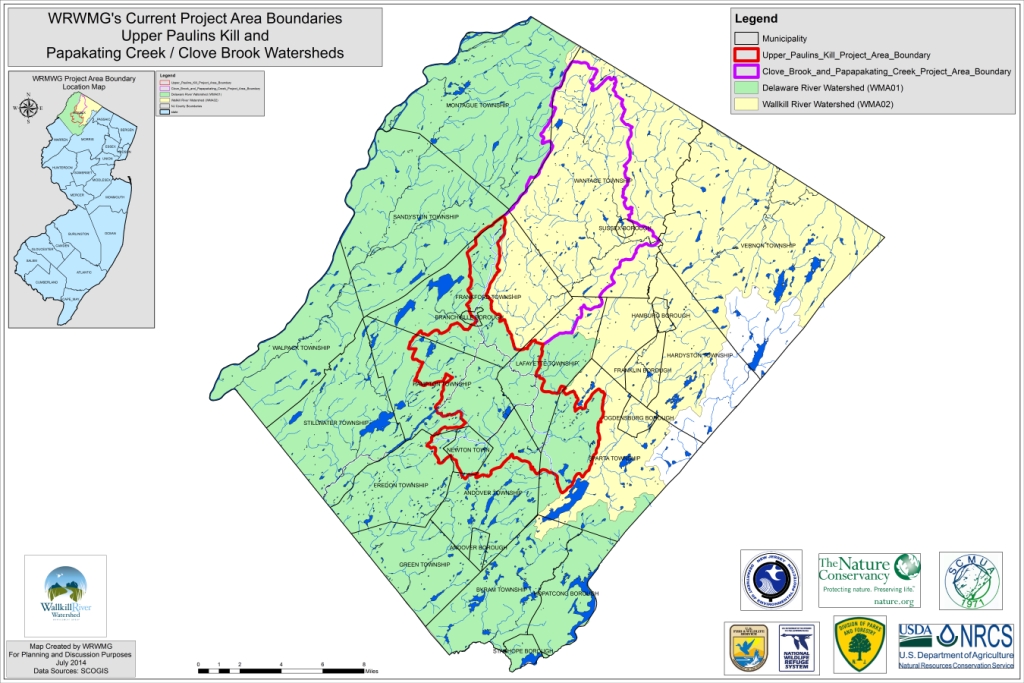What is a Watershed Restoration Plan?
The WRWMG likes to think of a watershed restoration plan as the "story of the watershed." In addition to providing a comprehensive characterization of a specific watershed area, a watershed restoration plan identifies, prioritizes, and recommends the actions that should be taken to restore, enhance, and protect it.

Papakating Creek / Clove Acres Lake - Clove Brook Watersheds
The WRWMG, with input from key partners, completed the development of two separate, but intertwined, watershed restoration plans for the Papakating Creek and Clove Acres Lake / Clove Brook Watersheds. These plans which, were formally approved by the NJDEP in January 2009, outline four major areas of restoration work: 1) stormwater pollutant loading reduction, 2) agricultural best management practices, 3) streambank stabilization and riparian buffer restoration, and 4) monitoring and reporting of stewardship initiatives by other community organizations
Papakating Creek / Clove Acres Lake Clove Brook Watersheds
Upper Paulins Kill Watershed: Headwaters to Balesville
In 2007, the WRWMG was awarded grant funding by the NJDEP to develop a watershed restoration plan for the Upper Paulins Kill Watershed from the Headwaters to Balesville. The plan, which was completed in October 2012, assesses and identifies restoration projects and management techniques which, if implemented, will result in achieving a reduction in the non-point source pollutant loading to the Upper Paulins Kill, as well as help ensure the long-term ecological health of the entire watershed.
Upper Paulins Kill Watershed